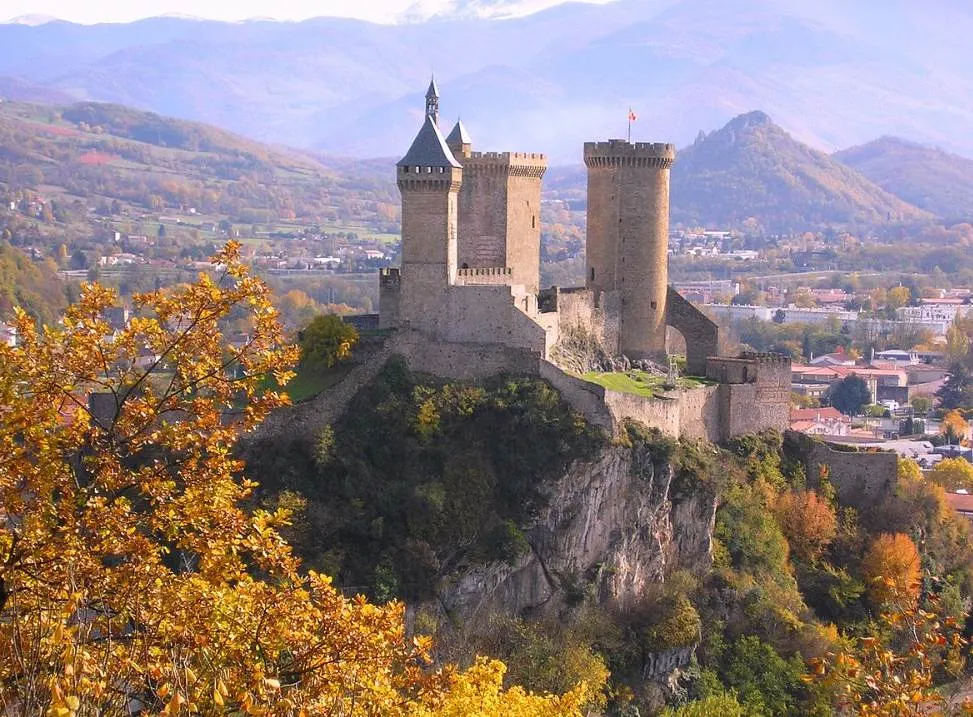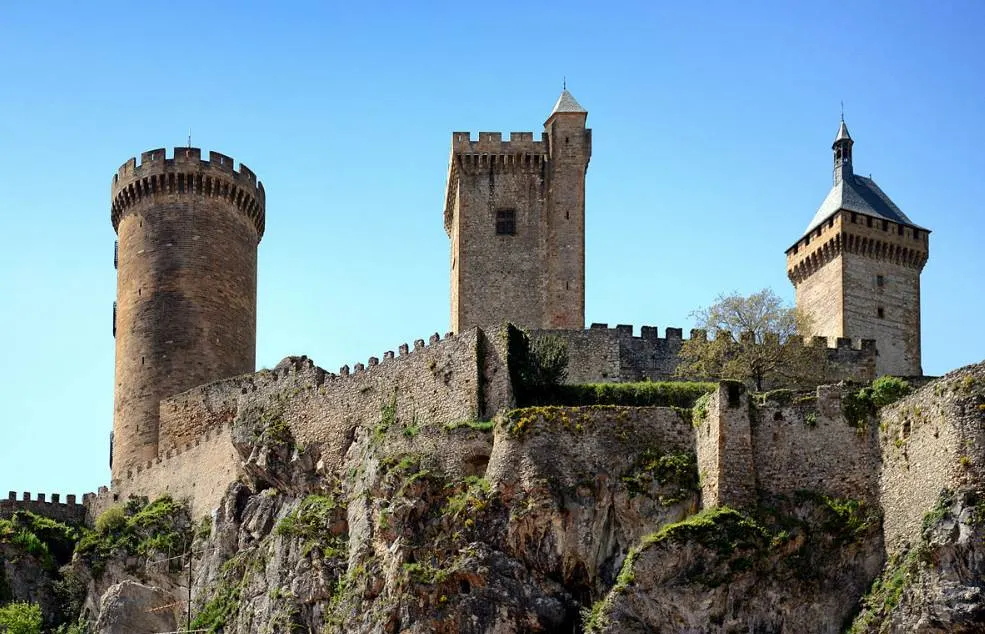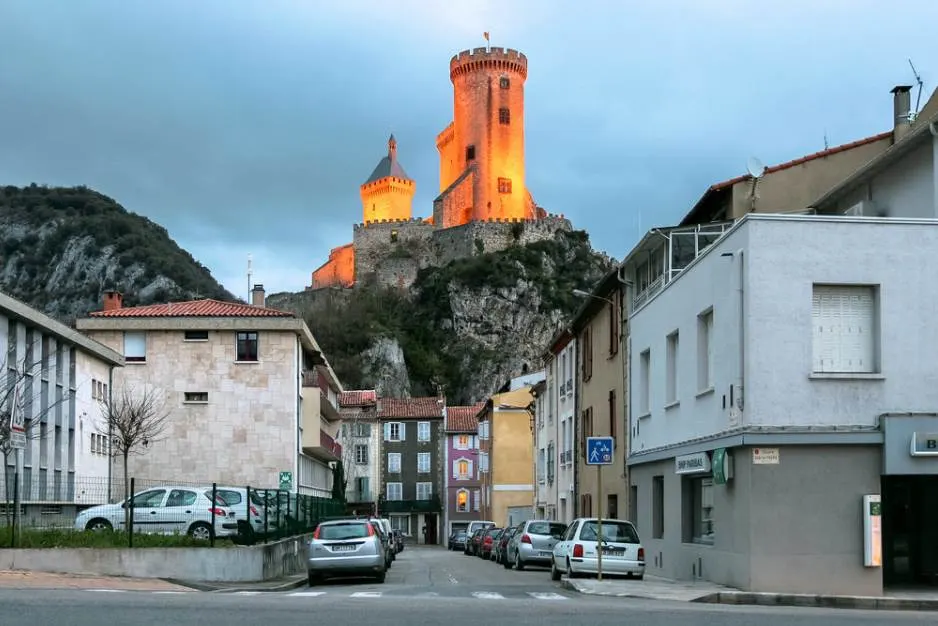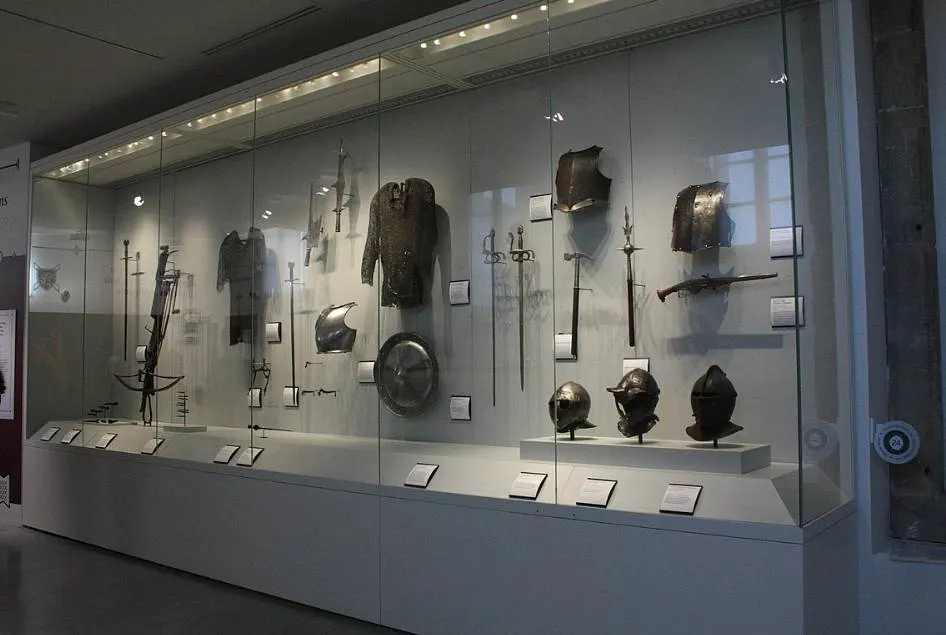One of the most fascinating castles in Europe overlooks a small town in the utmost southern part of France.
This incredible fortress has a history that goes back well over a millennium ago and it has dominated the mountainous landscape ever since.
In this article, you’ll discover some of the most interesting facts about the Château de Foix, a castle with some remarkable stories to tell.
1. It’s located in a town with the same name in southern France
The Château de Foix or ‘Foix Castle is located in the town of Foix, a relatively small town with a population of nearly 10,000 inhabitants.
Foix is the capital of the department of Ariège which is situated in the Occitanie region in the utmost southern part of France.
The Pyrenees Mountains form the natural boundary between France and Spain and the town is located at the foot of this majestic mountain range.
The major city of Toulous is not too far north of the town and Perpignan can be found just east of it. Both cities are merely an hour’s drive away.
The castle overlooks the modern-day town of Foix as it was constructed on a rock just north of the town’s center. This location provides extremely picturesque panoramas.

2. The original version of the castle dates back to the 10th century
The castle has existed since at least the year 987 A.D. It was constructed as an early-medieval stone fortification to protect the Counts of Carcassonne.

The first mention of the castle was made in 1002 when Roger I, Count of Carcassonne, bequeathed the castle to one of his sins named Bernard.
One of the most remarkable facts about the Château de Foix is that the French counts weren’t the first who had recognized this strategic location.
The Romans already built a fort here multiple centuries earlier. Just like their ancient counterparts, the castle allowed the family ruling in the region to control the entire upper Ariège valley.

3. It was the most important medieval building in the County of Foix
The ownership of such a monumental stronghold allowed the counts of Foix to become an independent county.
Foix became the capital of the County of Foix, an independent medieval fief that later on became a province of France. It covered an extensive area in the modern-day département of Ariège.
The castle that is located on top of a steep rock overlooked the entire region and was the stronghold of the local counts for many centuries during the Middle Ages.

4. It was important for a Chrisitan movement that was persecuted by the Catholics
Catharism was an offspring of Christianity and one of the many groups that were persecuted by the Catholic Church during the Middle Ages.
The Cathars, also known as the Albigensians after the city of Albi in southern France, thrived in southern Europe between the 12th and 14th centuries.
They referred to themselves as “Good Christians” and they believed in the existence of both a good and an evil God. This dualism wasn’t appreciated by the Catholics who perceived this as an act against the first principle that there is only one God.
The Catholic persecution of Cathars was severe and the Château de Foix served as an important refuge for the persecuted members of this Christian group.
Regardless of this important function, the Albigensian Crusade in 1209 eradicated many members and the Medieval Inquisition eventually managed to completely remove it from society by 1350.

5. The fortification was impregnable except for once in the 15th century
The castle wasn’t merely a great refuge for persecuted Cathars, it also served as an impregnable stronghold for the Counts of Foix for multiple centuries.
The castle was besieged on numerous occasions, including by the infamous French nobleman and military commander Simon de Montfort (1175-1218) in 1211 and 1212.
The fact that this man, who is considered to be one of the greatest military commanders of the Middle Ages, was unable to capture the castle just stresses the impregnable nature of this fortification.
The only time it was taken over by an attacking party was in the year 1486 when two branches of the Foix family clashed and treason was committed against the defenders.

6. It was the only castle in the region that wasn’t destroyed in the 17th century
The fact that we can still admire the Château de Foix is also because of a stroke of luck in the 17th century.
The castle played a major defensive role during the French Wars of Religion between 1562 and 1598. This was a major civil war between French Catholics and Protestants.
This devastating event ended with the Edict of Nantes, signed by King Henry IV in April 1598, which offered Protestants a lot more rights in society.
French statesmen and Catholic clergyman Cardinal Richelieu (1585-1642) didn’t appreciate this agreement and ordered the destruction of multiple castles that had served as Protestant strongholds in the region.
Foix Castle was the only castle in the entire region that was spared from demolition.

7. The towers of the castle were used as a prison for over 4 centuries
The castle features 2 square towers and one round tower. These are the architectural elements that dominate the landscape in and around the town of Foix.
The Round Tower was constructed in the 15th century and was the latest major addition to the fortification. Both square towers are much older and date back to the 11th century.
All towers were used as both civil and political prisons for over 4 centuries. They served this purpose until the year 1862.

8. The Château de Foix has been home to a regional museum since 1930
The importance of the castle has been recognized by the French state for nearly 2 centuries. The French Ministry of Culture designated it as a monument historique in 1840.
The interior of the castle was completely renovated in the early 20tcentury and it has been used to house the collections of the Ariège départemental museum since 1930.
At this museum, you can discover Roman and Medieval artifacts that tell the entire story of both the castle and the region of Ariège.

